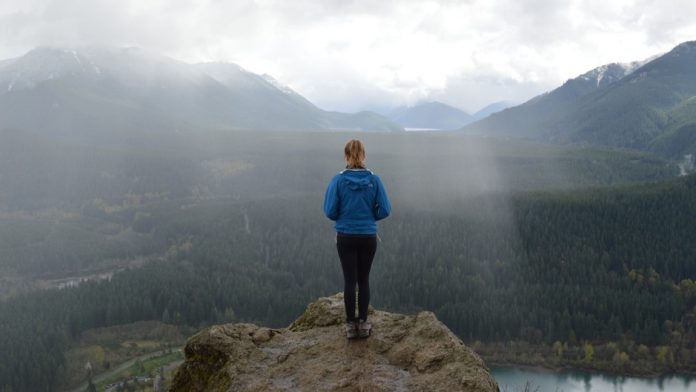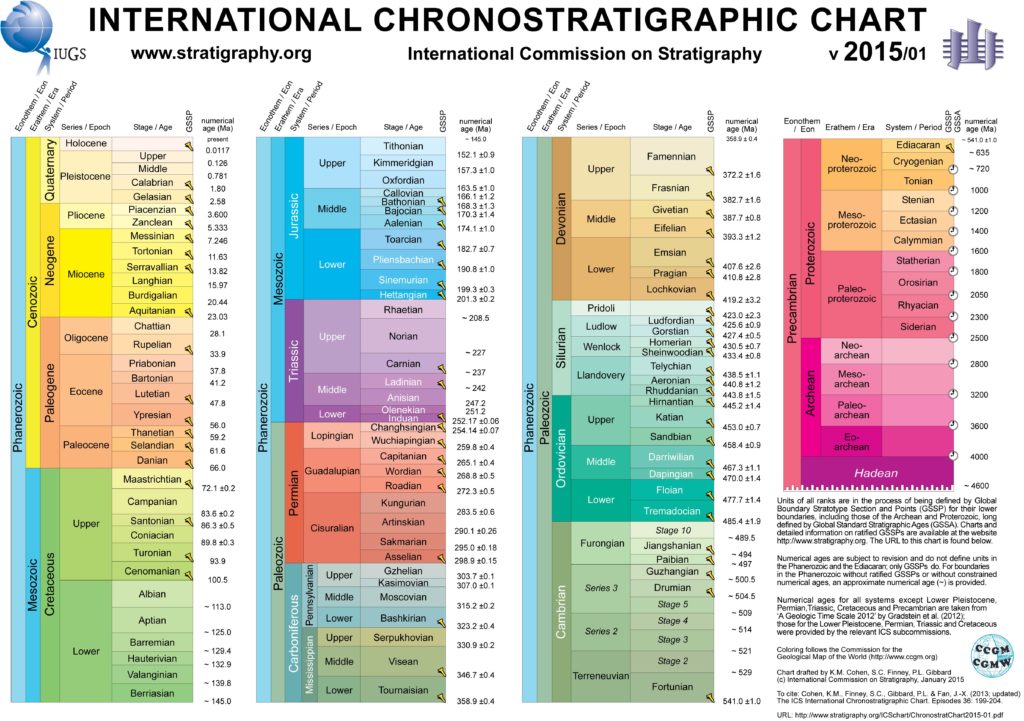Humans have had such an impact on the Earth that we’ve left permanent marks in the very substance of our planet. At least that’s the argument presented in a review published in Science last week.
Just like your life is divided into years, months, days, and minutes, the life of the Earth is divided into eons, eras, periods, and epochs, together known as the geological time scale. These divisions are defined by distinct changes to the composition of the layers of rock or ice that cover our planet.
Currently, we are living in the Holocene epoch which started about 11,700 years ago, or when the last “Ice Age” ended, but an international group of scientists, including Prof. Alexander Wolfe from the University of Alberta, believe that human activity has now ushered in a new age. They are calling this new epoch the Anthropocene, from the Greek root anthropo-, meaning human.
The current chronostratigraphic chart. Used with permission from the International Commission on Stratigraphy.
We are the new meteor
The end of the late Cretaceous period is marked by a layer of the metal iridium, remnants of the meteor that struck Earth at that time and wiped out the dinosaurs. The geological markers that could be used to define the Anthropocene include man-made materials like concrete and plastics that form so-called “technofossils”, increased levels of nitrogen and phosphorus from the widespread use of fertilizers, black carbon and inorganic ash from burning fossil fuels, or radionuclides left behind from nuclear tests in the 50s and 60s. The one thing all these markers have in common is their connection to human activity.
Climate change and higher extinction rates also tend to mark divisions on the geological time scale, both of which have been noted since human populations increased.
A small chance
There is still debate over when exactly this new age began. Options include an “early Anthropocene” beginning with the spread of agriculture, or the Industrial Revolution in 1800. Authors of this review vote for a mid-20th century date, somewhere between 1945 and 1964.
Either way, if you think about how many years an epoch typically spans, you begin to see what a small chance you had of witnessing the beginning of a new one. “Not only would this represent the first instance of a new epoch having been witnessed firsthand by advanced human societies, it would be one stemming from the consequences of their own doing,” the review concludes. Pretty amazing.
Making it official
The term Anthropocene is likely to remain well-used, but formalising it requires recognition by the International Commission on Stratigraphy (ICS). Prof. Wolfe is part of the working group on the ‘anthropocene’, set to present its results to the ICS in April. These will include an exact date for when the Anthropocene began, a formal geological marker that identifies it, and a location where this marker is distinct.
Though it may seem like little more than semantics, what we leave behind is the way future civilizations will see us, study us. Just as we look back and imagine when dinosaurs roamed the Earth, future geologists will find these markers and attempt to reconstruct our society. This is our legacy.
Think geology rocks? Check out our interviews with Profs. Neil Banerjee and Graham Pearson to see what else rocks can tell us!






































